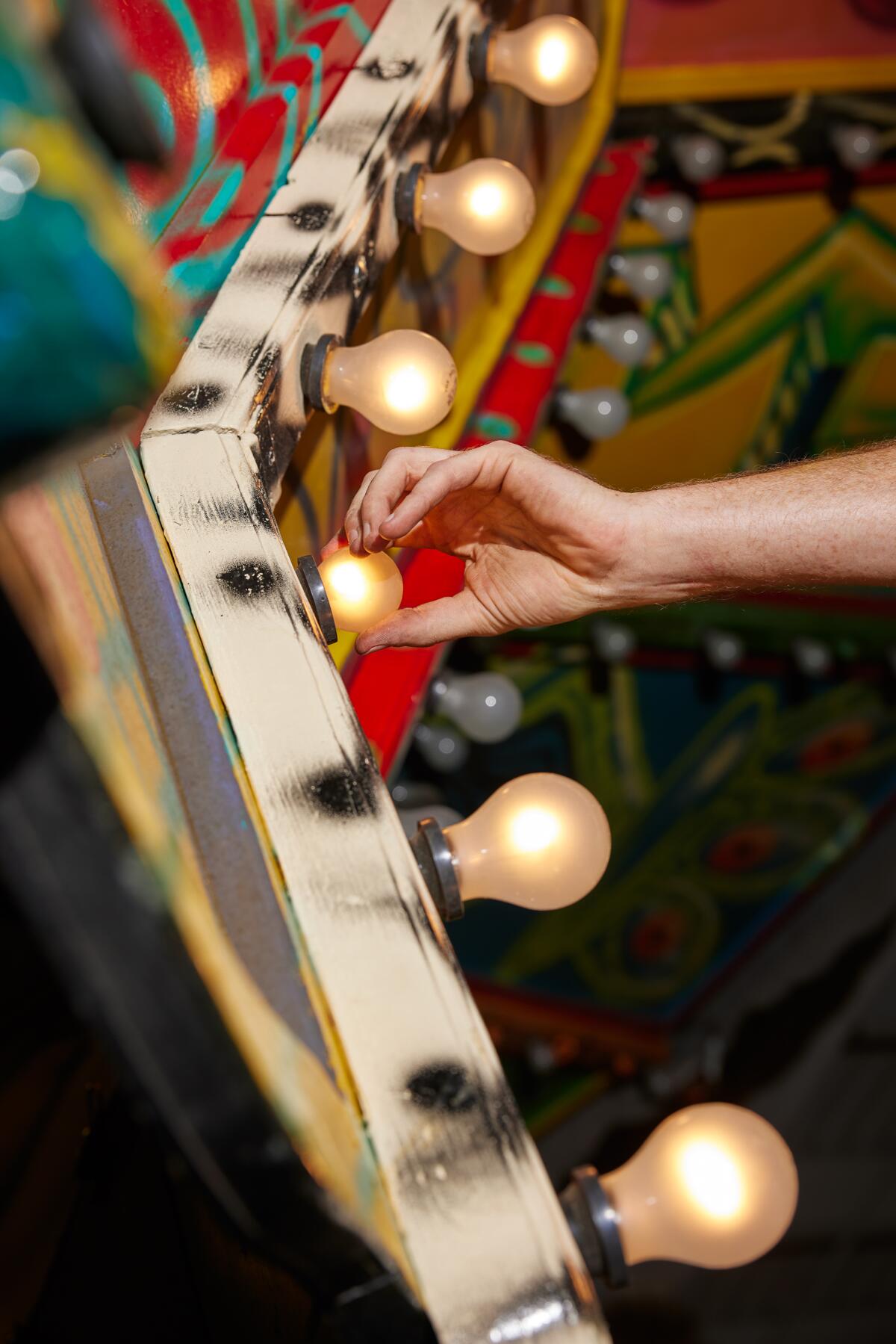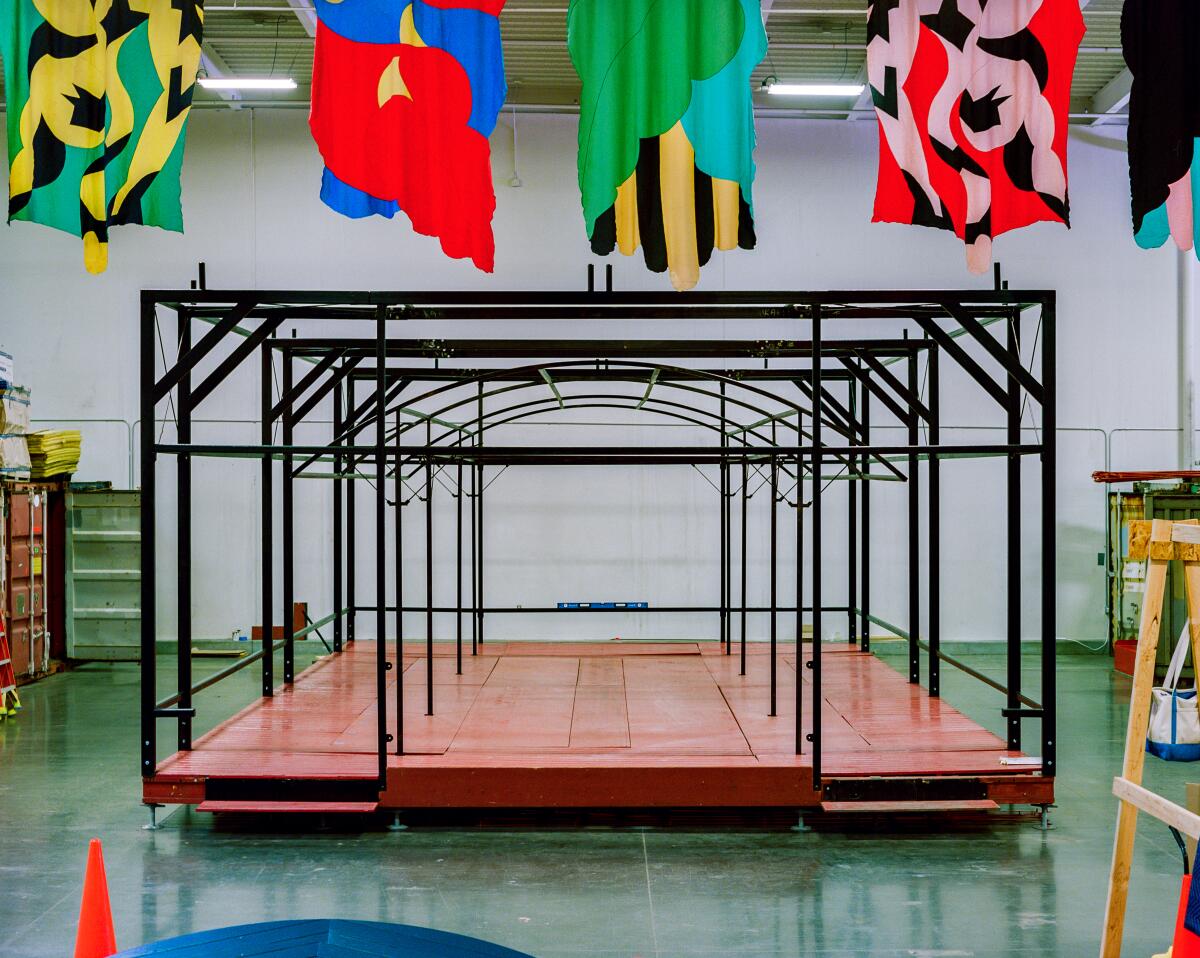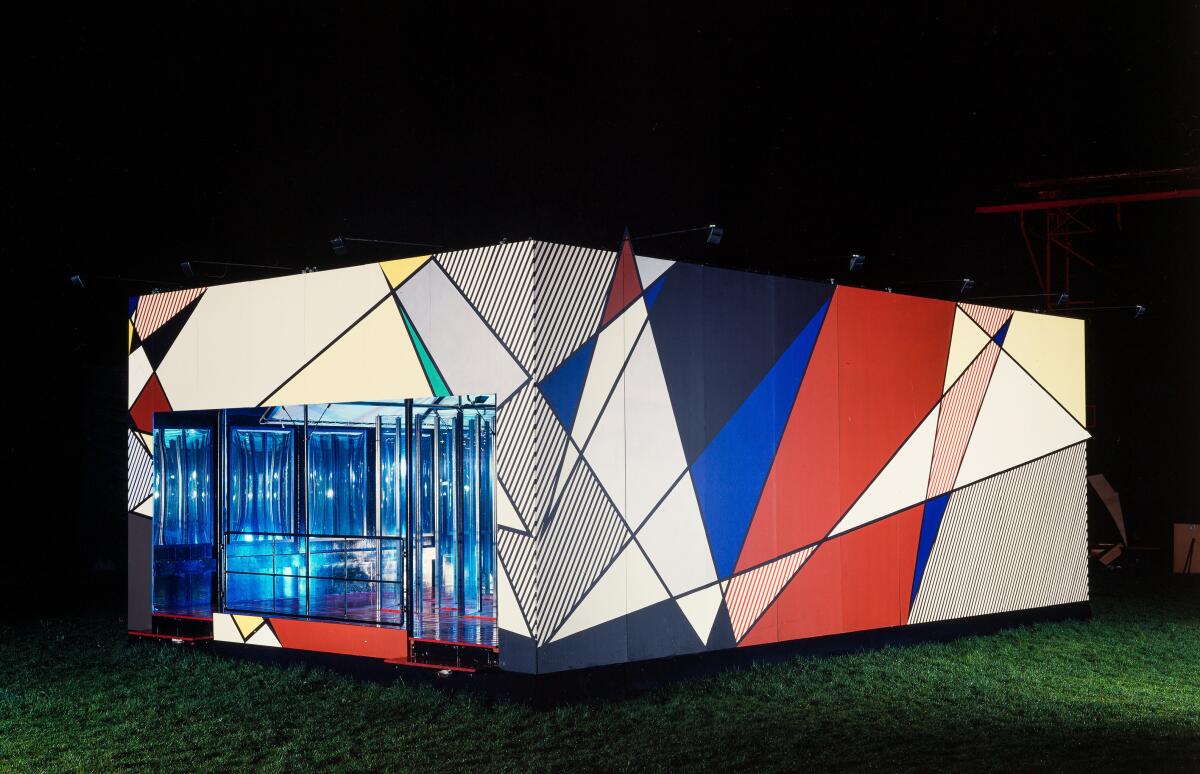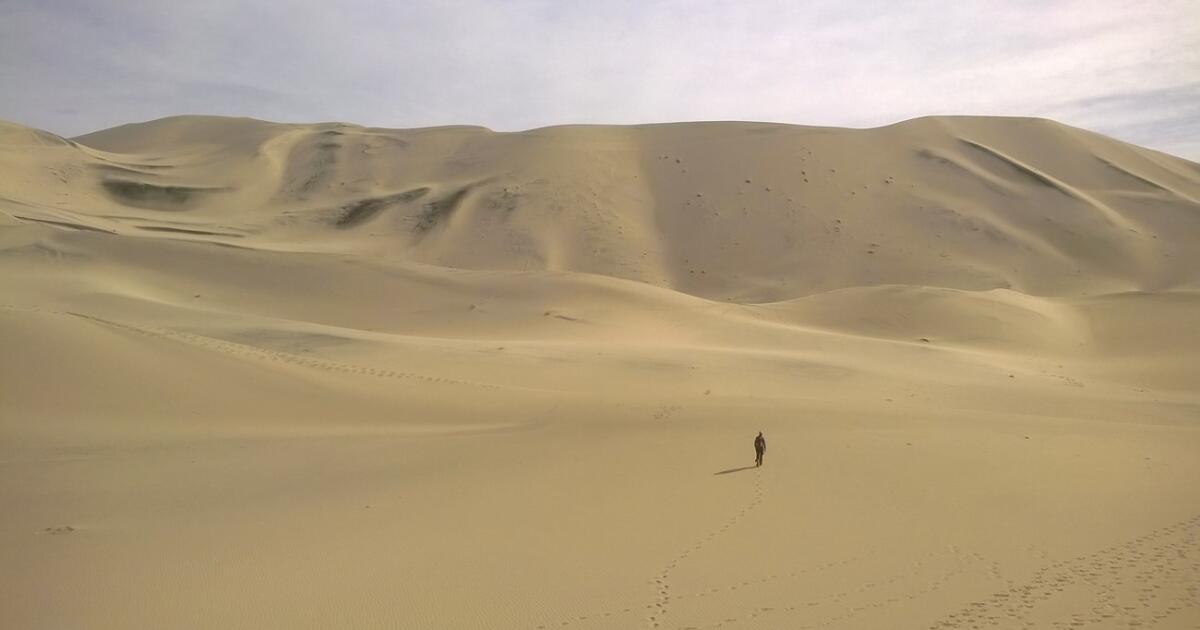Luna Luna was ahead of its time. And in some ways it’s a miracle that it existed at all. The contemporary art world is filled with cynical looks at the themed-entertainment industry: Artists have been distorting Mickey Mouse imagery for nearly as long as the animated character has existed, and then, of course, there’s Banksy’s mid-2015 corporate teardown, Dismaland. Luna Luna is not that.
“An amusement park is, after all, mistakenly regarded as something less serious than, say, an exhibition at the Centre Pompidou [in Paris],” said Heller in the 1987 published Luna Luna exhibition book, which has been reissued today by Phaidon.
In 2023, the idea of an art park doesn’t seem so far-fetched. Disneyland, for one, is under constant reassessment, and what is an attraction such as It’s a Small World, designed almost entirely in the visions of artists Mary Blair and Rolly Crump, but a boat ride through a makeshift art gallery? Then there’s Meow Wolf, the Santa Fe, N.M.-based art collective that has opened theme park-inspired walk-through exhibitions in numerous cities, including Las Vegas and, most recently, Grapevine, Texas.
Heller was prescient in his merger of amusement parks and art institutions. “I find this project so interesting because, throughout the history of the 20th century in art, there’s been a dream on the part of artists to break down the boundaries between art and life,” Molesworth says. “This is one of those projects that does it.”
Heller, whose initial Luna Luna began with a reported $500,000 grant from a German magazine, himself often spoke of trips to Vienna’s Prater amusement park as inspiration, contrasting lasting images of WWII outside its gates with the fantasy that was inside the park — the ventriloquists, trick shooters and tap dancers. “I have basically never stopped spinning the web of these childhood myths, a life-saving assertion of the imagination against the sum of what threatens me and causes me despair,” Heller said in the exhibition monograph.
Luna Luna’s resuscitation became a reality in 2022, when Drake’s entertainment firm DreamCrew acquired the Luna Luna assets for an undisclosed sum from the philanthropic Stephen and Mary Birch Foundation. The project was brought to DreamCrew via creative director Michael Goldberg, who in 2019 says he stumbled across an article about the original park, and then spent the early days of the COVID-19 pandemic becoming increasingly obsessed.
“When Luna Luna first caught our attention, we knew we needed to be a driving force behind its resurrection,” read a statement from DreamCrew’s partner Anthony Gonzales. “Not only was this a once in a lifetime opportunity to rediscover a lost history and share the story with the world, but also gave us the ability to work with the most talented partners recreating the original vision, which still held so much untapped potential.”
But there were hurdles beyond just finding a buyer wealthy enough and interested in the project. Luna Luna was sitting in shipping containers in the small town of Nocona, Texas, and partners art attorney Daniel McClean and creative entrepreneur Justin Wills note that the Birch Foundation wanted a commitment to buy the entirety of the collection with relatively limited inspections.
Guests outside of David Hockney’s magical forest exhibit at Luna Luna in Hamburg, Germany.
(Luna Luna)
“You’re driving along the road,” Wills says of his first trip to Nocona, “and from the side of the road you could see the shipping containers hiding in plain site. The ones with infrastructure in them were under an awning,” and some of the art pieces were residing in a metal barn.
McClean remembers seeing about three containers in 2018, a fraction of the entire exhibition. “It was enough to make me totally addicted,” he says.
“I recently had the opportunity to see the Ferris wheel in person and was taken aback by how fresh and new it felt, like so many of Jean-Michel’s works,” says Lisane Basquiat. “The moment was bittersweet, as I felt the joy that Jean-Michel and his friends must have experienced while working on the project.”
In relocating Luna Luna to Southern California, the park is ending up, in part, where it was always destined. After its summer 1987 run in Hamburg, where more than 240,000 people reportedly visited the attraction, Luna Luna was bound in the early ’90s for San Diego. Financial, legal and bureaucratic realities intervened, and Luna Luna has been barely heard from since.
That Luna Luna is something of a mystery, Molesworth says, is part of its appeal. “Here was this thing that existed, and disappeared, not only in reality but in lore,” Molesworth says. “It wasn’t like people were talking about it or telling stories about it. It fell off everyone’s collective radar. Then it reemerges, and it’s great.”

Installing lightbulbs on Kenny Scharf’s swinging chair ride.
(Luna Luna LLC)
Luna Luna was in the early stages of its installation at two connected warehouses when The Times visited the space in late September. Many pieces sat in various states of disassembly and refurbishment. A glass labyrinth from Roy Lichtenstein, for instance, was largely a skeleton.
Figureheads for a Kenny Scharf swing set loomed over the reconstruction space, their elongated noses and alien-like ears setting a mischievous tone. Scharf’s swing set is striking, composed of panels of contrasting colors and objects; wondrous birds in the clouds intermix with mouths and eyes that appear as if they’re melting. McClean estimates the existing attractions were already at least 50 years old when Heller commissioned the artists to decorate them in the mid-1980s.
“I dreamt up Luna Luna with the determination that art should come in unconventional guises and be brought to those who might not ordinarily seek it out in more predictable settings,” said Heller via a statement. Heller is no longer involved in the project, stepping back after generating controversy for an alleged case of art forgery involving Basquiat’s Luna Luna work that he described as a “childish prank.”

Early restoration work on Roy Lichtenstein’s glass labyrinth for the Luna Luna exhibition, sitting below banners from Monika Gilsing.
(Luna Luna LLC)

Roy Lichtenstein’s assembled Luna Luna installation as it appeared at the park in Hamburg, Germany.
(Sabina Sarnitz / Luna Luna)
The team has big ambitions for bringing Luna Luna to a new generation. Los Angeles is not just the first stop of a Luna Luna tour but the beginning of a larger cultural project, one that if all goes according to plan will see a new crop of today’s artists reimagining amusement park attractions. Wills couches that goal as “the grand vision,” but Molesworth is on board and the group has already been in touch with European ride manufacturers, as the hope is to someday tour something that is fully functional.
“Luna Luna: Forgotten Fantasy,” read the statement from DreamCrew’s Gonzales, “is the first installment of what will be a long-term project with a multi-faceted approach exploring the world of art and its intersection with today’s modern world.”
But one step at a time.
The goal, for now, is to teach people the history and then build the brand, to show the world not just Luna Luna but also what it means to be a Luna Luna artist. And perhaps to further tilt the cultural view surrounding amusement parks. Asked about the importance of such spaces, Wills gave a succinct thesis for Luna Luna. “This is an epicurean view of life, but the purpose is joy and fun. I think that’s why these spaces matter and why we need more of them.”
Amusement parks, adds Molesworth, “are one of the few places in our culture that cultivate intergenerational fun. You have the parent, the child, the teenager, the dating couple — there’s a place for all of those people to have a spot.”
Amusement parks, then, are not just a place to play; they’re spaces, perhaps, to better understand the world we live in.
Luna Luna: Forgotten Fantasy




